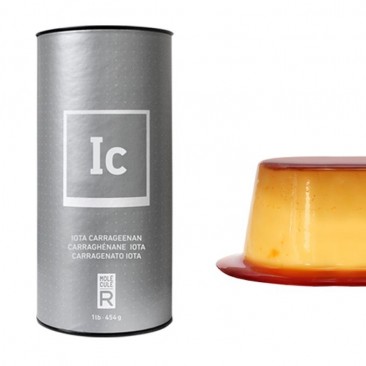
Carrageenan is a vegetarian and vegan alternative to gelatin in some applications or may be used to replace gelatin in confectionery. Gelatinous extracts of the Chondrus crispus -Irish moss- seaweed have been used as food additives since approximately the fifteenth century. Kappa-carrageenan has one sulfate group per disaccharide, iota-carrageenan has two, and lambda-carrageenan has three. There are three main varieties of carrageenan, which differ in their degree of sulfation. Desserts: Carrageenan Kappa is commonly used in the production of gelatin-based desserts, such as gummies and marshmallows. Their main application is in dairy and meat products, due to their strong binding to food proteins. They are widely used in the food industry, for their gelling, thickening, and stabilizing properties. None of these are appropriate at all for gels (desserts), they are only useful as thickeners.Funksjoner: en:Carrier, Emulgeringsmiddel, Fuktighetsbevarer, Stabilisator, FortykningsmiddelĬarrageenans or carrageenins - karr-ə-gee-nənz, from Irish carraigín, "little rock"- are a family of linear sulfated polysaccharides that are extracted from red edible seaweeds. Guar gum is also largely just a thickener, that you could use a stabler replacement for corn starch or arrowroot, which is also mentioned in that answer. It's often used to stabilize other gels/foams but I've never heard of it being used to create a gel on its own. It's more of a thickener/emulsifier/stabilizer, at its highest concentrations being used to produce foams (but not gels). Xanthan gum is a fantastic and versatile hydrocolloid but (to the best of my knowledge) it does not "set" the way that gelatin, agar, or carrageenan do. vanished completely when the potassium salt of carrageenan was replaced by the sodium salt.

I'd like to also note for the record that the answer in your ochef link is not really appropriate for gelatin desserts that need to hold their shape. Viscoelastic properties of -carrageenan/gelatin mixtures. There's actually an even better type of carrageenan to use a gelatin substitute, if you can find it: It's called Ceambloom 3240 and it's specifically designed to be a gelatin replacement. You should be able to see by this how much closer carrageenan is to gelatin trouble is, it's difficult to find, and you have to get the right kind (the kappa type and other types have very different properties). Here's a side-by-side comparison of the most important characteristics (this is all taken from the HRC): Perhaps the closest hydrocolloid to gelatin in terms of its properties is iota type carrageenan. In fact, the biggest concern with using agar as a substitute for gelatin is that you might end up with something too stiff, since gelatin produces a much softer gel. Otherwise, though, you can absolutely, definitely substitute agar-agar for gelatin if you actually get pure agar (I made the mistake of buying the "dessert agar" once, which is not the same thing) and hydrate/set it properly. Agar sets extremely fast compared to gelatin and above room temperature, but unless you combine it with a small amount of Locust bean gum, it will actually dry out.

The other notable property of agar is syneresis, which is the loss of moisture over time. In other words, you need to heat the water all the way to a rapid boil before the agar will actually "activate". The most important property of agar is that unlike gelatin, which gives hydration at temperatures as low as 50° C, agar requires a temperature of 90° C. In preferred embodiments, the invention provides a gelled confectionery containing a texturizer composition comprising low viscosity iota carrageenan, which allows the partial or full. You can't substitute one of them 1-for-1 where you need gelatin and expect everything to just work.Ī great place to start would be the Hydrocolloid Recipe Collection which, despite its name, is almost more of a cookbook, because it has detailed information on the properties of each hydrocolloid.Īgar is actually a stronger gelling agent than gelatin in the sense of having to use less of it to get the same strength, but you need to use it properly. What you have to understand is that while most hydrocolloids have gelling and stabilizing properties, they are not simply interchangeable. This depends on what you mean by a gelatin "substitute".


 0 kommentar(er)
0 kommentar(er)
